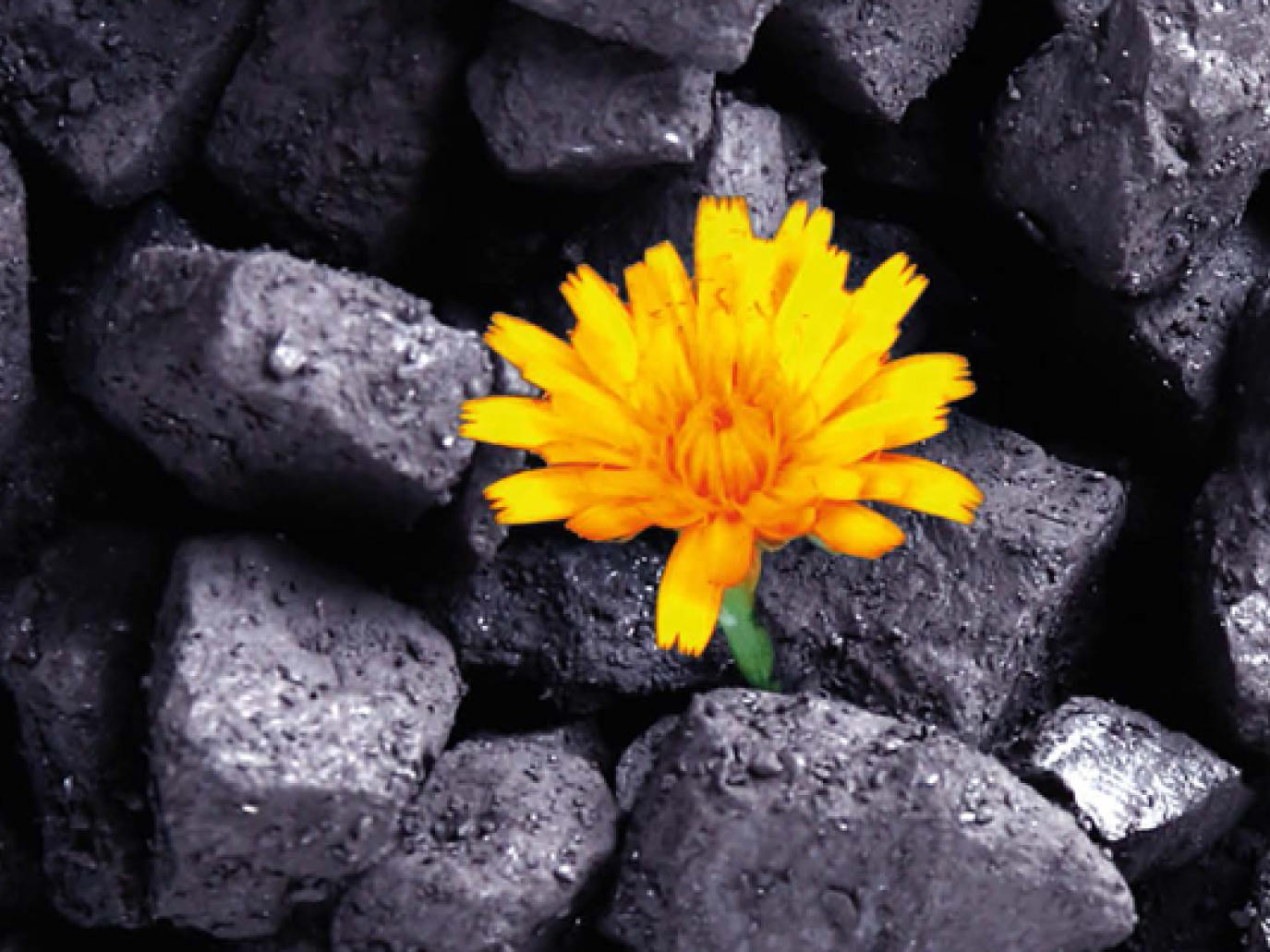Western public opinion currently perceives China as a country whose prodigious economic growth has come at the price of unsustainable levels of environmental pollution. Although this idea does hold a lot of truth to it, it also merits being updated. In recent times the Chinese Communist Party has started veering towards sustainability, also because of protests in large urban centres and in rural areas that have suffered the devastating presence of mines. This has resulted in the closure of some high-impact steelworks and aluminium foundries, and in the fact that today China can boast the highest output in the world from renewable sources, and one third of electric vehicles globally.
The 19th Communist Party Congress, held in October 2017, had a decisive role in this shift. Among the statute’s fourteen new basic principles, there is one in particular that aims to guarantee harmony between man and nature, asserting that the ecological approach is vital to the development of the Chinese people. This is the origin of the commitment to promoting energy saving, protecting the environment and contributing to global environmental security. A commitment which, in 2018 – concurrently with the cessation of plastic waste imports – led to the introduction of a business tax on noise, waste and the pollution of air and water, whose revenue will be devoted entirely to environmental protection measures. Among the productive sectors most affected by this new approach we find the mining industry, both within and outside China’s borders. This confirms what was highlighted by Congress and the 2017 Expo on extraction activities, both of which focused on green mining, meaning the sustainable and responsible development of mines.
China’s approach towards responsible sourcing, a report published in 2018, gives a detailed picture of the Chinese path to green mining. The document was drafted – thanks to funding from the European Union’s Horizon 2020 Programme – by the Öko-Institut in Darmstadt, Germany, within the framework of the EU’s STRADE project. Active mines in China number over 100,000, less than half of the 230,000 that were opened between the 1980s and the year 2000. The study found that environmental and health impacts, as well as deadly accidents, are still an everyday occurrence. The certification criteria for green mines, introduced by the Ministry for Territory and Resources in 2010, are related to the implementation of management systems for the protection of health and the environment, safety, energy efficiency, waste reduction, investments in green technologies, site reinstatement and support for the development of local populations. Unfortunately, Peter Dolega and Doris Schüler – the authors of the report – note that “information in English is lacking, a sign that China considers the matter its own concern, not to be divulged.”
A helping hand comes in the form of an article entitled, “The Status and Achievements of Green Mines and Mining”, by researchers Shen Lei, Kong Hanxiao, Wang Jian, Huang Xu and Hu Ke. In 2014, sites certified as green mines for the extraction of coal, gold, ferrous and non-ferrous metals and raw materials for the chemical and construction industries numbered only 661. Coal led the pack in terms of virtuous sites, with 228 green mines (35% of the sector’s total at the time), while quarries were the worst performers.
The cultural analysis of the green approach is of particular interest: “Mining ethics in China, studying mainly the moral issues of the interrelations among people, nature and society related to mining processes, is a component of practical ethics,” it reads. “This research has combined Chinese traditional ethics and Western ecological ethics, according to new civilization and social development tendencies.” This ethical approach has four defining elements:
- social responsibility in business, which contemplates respect for nature, the environment, society and economic concerns;
- the promotion of social and economic progress for residents in matters of human rights, health and employment, going from mining businesses’ charitable assistance to the “technocratic rationalism” of “responsible competitiveness” and sustainable development: in practical terms, the creation of jobs and the construction of schools and hospitals;
- the reduction in environmental damage of mining activities through the reinstatement of sites, the recycling of materials and cleaner production methods;
- finally, the protection of biodiversity, borrowing best practices from Australia, Canada and other Western countries.
China’s Nine Green Mining Criteria
On 13 August 2010 the Chinese Ministry for Territory and Resources made known the nine criteria on which green mining is based, urging mining companies to fulfil their social obligations, promote the “greening” of mines and build an environment-friendly society based on reducing the consumption of resources. Below is a synthesis drawn from “Status and Achievement of the Green Mine in China”, by Xu Huang, Ke Hu, Yao Liu and Dawei Liu of the China University of Geosciences in Beijing, and Xin Li of the China Mining Association.
- Legality as a fundamental prerequisite: a business’s extraction activity must be authorised and legally recognised.
- Standardisation of site management: companies must adhere to and respect conventions. At the same time, they have to delineate a management system and certify their activity’s quality levels in matters of health, safety, environmental protection and products.
- Comprehensive utilisation of resources: government and businesses must emphasise a respect for resources and adopt clean production methods, reaching the highest technologically possible level of energy saving and emissions reduction, as well as doubling efforts to achieve total recycling of the resources being used.
- Investments in research and technology: companies must invest over 1% of their gross earnings to improve their research and the technologies they use, updating obsolete ones, adopting more advanced innovations and promoting research on recycling.
- Energy saving and waste reduction: atmospheric emissions, wastewater and industrial waste must be reduced to comply with national parameters; the reuse of wastewater must reach at least 90%, with the aim of achieving zero-waste. The objectives for the percentages of solid waste reuse have to be equal to the highest levels achieved in Chinese mines.
- Environmental protection: companies are required to reinstate sites and to jointly develop the design, construction and activity of mines.
- Decontamination: companies have to formulate plans for decontamination and soil use in respect of the land being used.
- Harmonious communities: businesses must fulfil their social obligations, making efforts to develop harmonious communities for the construction of a positive image of the industry.
- Company culture: businesses have to focus on developing a company culture formed of a cohesive, positive and pragmatic leadership and competent and qualified staff. Employees must be guaranteed material and immaterial benefits through a system of measures aimed at achieving this goal.
X. Huang, K. Hu, Y. Liu, D. Liu, X Li, “Status and Achievement of the Green Mine in China”, Ipcbee 36, 2012, https://pdfs.semanticscholar.org/26fa/acaec1a61ff82948a4a7b8ea798ce8a3be92.pdf
Given the low percentage of green mines, the Ministry developed a guide for the sector’s green development in the 2016-2020 period, aiming to establish pilot models of extractive sites in at least 50 mining regions across the country, and inviting private businesses to adopt more sustainable management practices at their sites. A second, more practical ministerial guide (“Guidance to Facilitate Development of Green Mines”) was published in 2017 and brings into play multi-level government funding and an imposition that new mines have to respect green management criteria. The government also took measures to close down illegal sites. On the private front, it is worth noting that 61 companies joined together in the Strategic Alliance for Development of Green Mining, which also published a guide that covers a mine’s entire lifecycle: design, construction, management and closure.
The launch of a “greening” process for Chinese mines was helped along by the slowdown of the country’s growth in GDP, and by the contemporary availability of raw materials at stable prices on foreign markets. There’s one clear problem: the countless small and medium-sized mines are a true Achilles’ heel for the sector because of the low levels of technology, energy efficiency and availability of financial resources.
There is also another element to consider: although it is extremely rich in natural resources, China is also heavily dependent on foreign supplies. There are over 6,000 Chinese companies that manage mines abroad, especially in Africa. These are overwhelmingly responsible for the perception that Chinese mining companies care very little about their impact on the environment and on local populations. According to the Öko-Institut’s researchers, this trenchant judgement should be re-evaluated: “A growing number of mines are managed by Chinese companies with similar or even better practices compared to Western businesses.” The government in Beijing has developed guidelines for responsible supply chain management on the part of Chinese mining businesses abroad, and it aims to stimulate their awareness and knowledge of the issues at play. The aim of these guidelines is to avoid foreign opposition to the “New Silk Road” infrastructure investment programme, as well as to respect requirements for access to US and EU markets, established respectively in the Dodd-Frank Wall Street Reform and Consumer Protection Act, and the EU’s Conflict Minerals Regulation. Both these provisions establish obligations in matters of due diligence for supply chains aimed at importers of tin, tantalum, tungsten and gold sourced from high-risk or conflict zones, such as the Democratic Republic of Congo. The launch of the Responsible Cobalt Initiative – promoted by the Chinese miner’s Chamber of Commerce, the Association of Importers and Exporters and the OECD in collaboration with the Democratic Republic of Congo – to invigilate the supply chain of cobalt, a crucial metal for the production of lithium-ion batteries, is proof of China’s new commitment to better practices. Similarly, this can be said of the Global Battery Alliance, which aims to promote a value chain that is socially responsible, environmentally sustainable and innovative as a driver of the Fourth Industrial Revolution.
These two examples are a testament to the collaboration that is taking place between China and Western countries. “A dialogue that must continue, overcoming linguistic barriers and different approaches to transparency,” urge the authors of the report.
Oko-Institut, China’s approach towards responsible sourcing, January 2018, http://stradeproject.eu/fileadmin/user_upload/pdf/STRADE_PB_03_2018_China_responsible_sourcing.pdf
S. Lei, K. Hanxiao, W. Jian, H. Xu, H. Ke, “The Status and Achievements of Green Mines and Mining”, Journal of Resources and Ecology, September 2016; https://doi.org/10.5814/j.issn.1674-764x.2016.05.001
Responsible Cobalt Initiative, www.respect.international/responsible-cobalt-initiative-rci
Global Battery Alliance, www.weforum.org/projects/global-battery-alliance
Top image: Credit CSIRO



